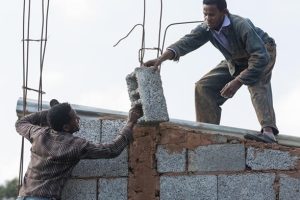It is recalled that The Ethiopian Herald has written pieces indicating as the obelisks of Axum, registered by UNESCO as world heritages are under critical condition. Now, it has come up with the reactions of the concerned organ. Yonas Desta, Director General, Ethiopian Authority for Research and Conservation of Cultural Heritages (EARCCH), said whenever one talks about the issue of the obelisks of Axum, it should be clear that he\she refers not only the obelisks and their foundations but also the field where they are rest at and the tombs beneath them.
The reality on the ground, according to the Director General needs urgent professional assessment, support and various protection and preservation works.The only task which has been taking place withregard to these Obelisks in the previous 100 years, as per him, was focusing only on excavation as the effort to know the secret of the obelisks and their foundations.
It was those studies which enabled the concerned organs learn the area and its history. However, those studies and research works have exposed the obelisks to danger to the extent of their importance to understand there by gain a scientific knowledge about them. It is clear that theses obelisks have lived for quite many years before those excavation works were started.
But, now, these obelisks are exposed to rain, sunlight and sewage due to these excavation works. Beyond that, the number of tourists who want to visit these heritages has significantly increased since the last ten years. So, these tourists, irrespective of its intensity, have inevitably their own impacts on the site for a number of tourists move into the holes and tombs which is an additional impact, he added.
Therefore, any support in this regard should consider and manage all these challenges. In connection to this, various tasks like preventing sewage from entering into the foundation of the obelisk on the site have been carried out so far. Nevertheless, an urgent and serious action of preservation and protection works that takes all these into account is, now, required.
For this reason, the core zone and buffer zone of the site have been already identified through the studies conducted during the last 15 years. As to Yonas, it was three years ago that the HPR has officially endorsed the new boundary of the site as a proclamation. As could be known from the General Director, research outputs have shown as there are 13 palaces in the underground of the site’s core zone and buffer zone and all dwellers who used to live there are relocated to another place.
He said that mainly, one has to adequately know the thing that he\ she should protect and preserve to scientifically preserve it. From this point of view, now, the Authority has defined the core zone of the site and prepared a document containing more details with regard to the role of all respective stakes. Likewise, the role of all concerned organs such as the city administration, the Bureau of Culture and Tourism of the State, that of the federal government and UNESCO and the general public with regard to the buffer zone of the site is already identified, he furthered.
It was those efforts that the Authority in collaboration with other concerned bodies have been making to decide the management plan and administration system which are now completed that took quite a prolonged period of time. By now, as mentioned earlier, the core and buffer zones are already identified that in other words, now, the minimum requirements have already been meet though the research process is continuous.
For example, five professional UNESCO missions have come during the last 4 years for this project. Now, the process to come up with a sustainable solution to the challenges of not only the current ones related to the obelisks but also the all rounding problems of the whole heritage site, is almost finalized. Nationally, the validation process of the study is finalized. “At present, we are waiting for that of the international one and it is also almost completed that various feedbacks are now coming, so we will finalize the formal document in weeks’ time,” Yonas expressed.
Then the task of removing the rope tied to the obelisk when returned from Italy to support it while erection, the efforts to solve the challenges related to sewage and drainage and other problems connected to the various tombs should be initiated as one part of project of the site. The Authority by now is working on bureaucratic and technical preconditions that enable it finalize its preparations, he signified. “Now, we are working to create a condition that enables us start our activities on the site in this budget year,” he underscored. Regarding to the urgency of the problem, he mentioned that any challenge on any heritage is always considered as a top urgent issue to the Authority.
The issue with regard to the obelisks of Axum and others related to that site are now the top priority of the Authority. “We wish we could not have taken even a single minute if all other necessary preconditions to do our job had been fulfilled, as this is the reality on the ground right now. However, there is no any extremity that we think would be created to the obelisks under normal condition before we implement this project,” he reiterated.
The company which should take this project should not only be interested but also qualified enough to carry out it. In this regard, there is an Italian Company which has been selected by the Ethiopian government and UNESCO and other concerned international institutions to install the obelisk returned from Italy.
This Company was not merely selected but it has also practically shown its capacity by installing that obelisk. He said, “Therefore, now, we are making our bureaucratic preparations to invite this Company in a special way. And this is more or less finalized, and we have already started to get permission from UNESCO since the past recent weeks”. As per Yonas, the project would enter into action within a maximum of three months with all its inconveniences. The government should, beyond speaking, practically work so as to avoid the critical challenges related to budget and skilled manpower, he expressed.
Herald February 6/2019
BY SHUSHAY ADANE





